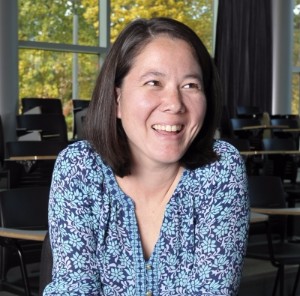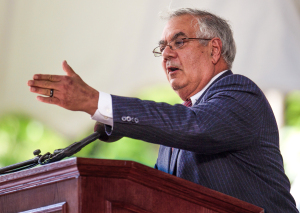Summer intensives are somewhat of a rite of passage for dance students. Spanning several weeks and taking place at nearly dance school and company around the country, intensives are designed to be just that: intense. Sometimes dancing for 10 hours/day, students take classes in a variety of techniques and styles, from classical ballet to jazz, hip-hop, and flamenco. This past summer, Marion Kudla ‘19 and Sophie Gray-Gaillard ‘20 each attended summer intensives. Their experiences both prove the value of these kinds of programs and reaffirm their demanding structure.
Kudla attended the BalletX summer intensive in Philadelphia for two weeks. BalletX is a contemporary ballet company that “encourages formal experimentation while preserving rigorous technique.” They have performed at Swarthmore several times, and Kudla says they influenced her dancing even before she attended the summer program. Citing a performance from her freshman year, she says, “it was this performance that helped me recognize the far-reaching ways that dance and movement can impact our lives.” The intensive reaffirmed this notion for her, and has inspired her to immerse herself fully in Swarthmore’s dance program during her last two years at school. One of the benefits of attending a summer program with a company rather than at a school is the unique proximity to professional dancers. Kudla talks about watching the company in rehearsal, and the rare sense of intimacy that comes from seeing the dancers off stage. “Somehow, the choreography they were rehearsing took on a completely new form when seen up close and out of costume. The personality of each dancer became all the more apparent, emphasizing the company’s diverse artistry and making me appreciate the individuality integrated into contemporary choreography.”
Sophie Gray-Gaillard spent three weeks at the Cambrians summer intensive in Chicago. The Cambrians are a unique force in the world of contemporary ballet. Their pieces are made through collaborations with several choreographers. Each choreographer will make a piece of the dance, and then the Cambrians will “remix” it, using only the steps that they have been given to create a completely new work. Gray-Gaillard took classes in flying low, a technique that “emphasizes the dancer’s relationship with the floor,” improvisation, cuban technique, and modern technique. She also had to remix her own dances. The Cambrians dancers would give students pieces of dance and stipulate them with “movement tasks.” Gray-Gaillard describes one of these tasks: “My partner and I were assigned a task where we had to take a phrase that was a remix of three other phrases and perform it with our hips never being more than a few inches apart. On top of that, we had to perform it at a super slow speed.” This kind of intellectual challenge is not necessarily typical for all summer intensives, and the Cambrians’ use of this creative pedagogical technique furthers the idea that they, and companies like them, are disrupting the world of contemporary ballet with foundational innovation.
Swarthmore dance professor Olivia Sabee believes that this kind of summer dance study is incredibly important for many reasons: “Beyond simply providing the opportunity to continue to dance over the summer, pre-professional summer dance programs are a critically important way for our choreography and performance-focused students to get exposure to techniques and styles beyond those offered here at Swarthmore. The varied repertory experiences—whether focused on existing or new work—these programs provide also help shape the voices of emerging choreographers by allowing them to experience these works firsthand.”
Gabriel Hearn-Desautels ’20

